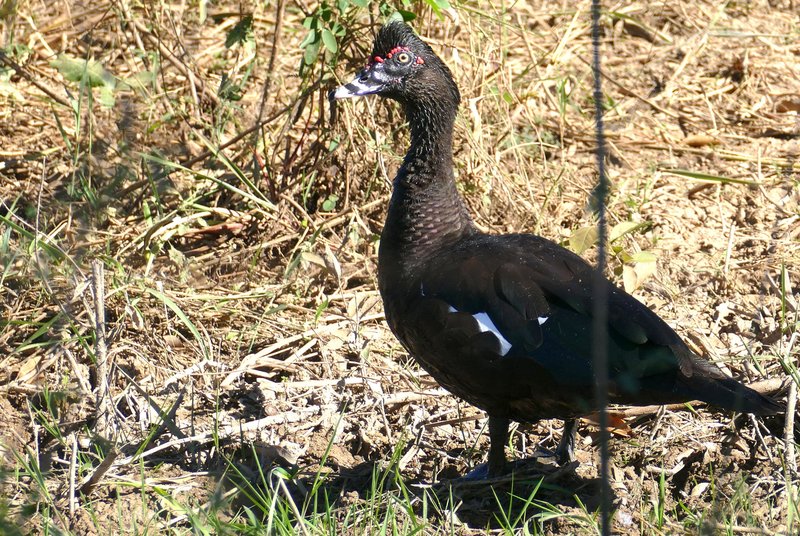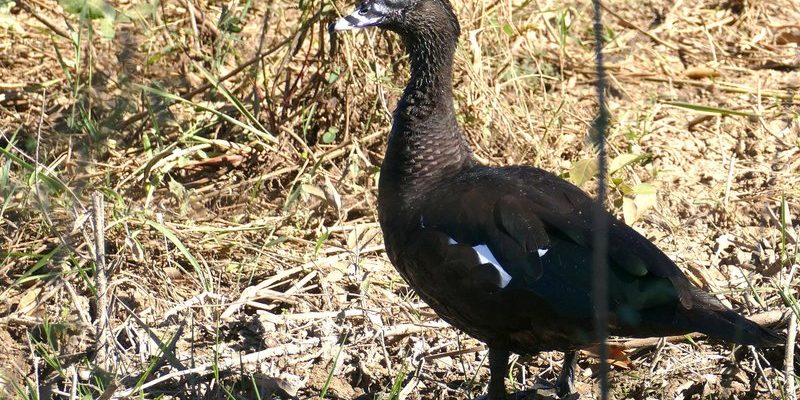
Imagine a colorful puzzle where every piece corresponds to a different aspect of an ecosystem. The Muscovy duck is one of those pieces, playing its role in maintaining the delicate balance of wetlands and waterways. If we’re not careful, we might lose this piece forever. Let’s dive into the conservation efforts working to protect the Muscovy duck and why they matter.
Understanding the Muscovy Duck’s Habitat
The Muscovy duck is a fascinating bird that thrives in a variety of habitats. You can usually find them near freshwater sources like lakes, rivers, and wetlands. These areas are crucial to their survival, as the ducks rely on shallow waters for food and nesting. Wetlands serve as a buffet for these ducks, providing them with plants, insects, and small fish. When their habitat is threatened or destroyed, it can have dire consequences for their population.
Sadly, habitat loss is one of the biggest threats to Muscovy ducks. Urban development, pollution, and climate change are relentlessly encroaching on their natural homes. Essentially, every time a new road is built or a wetland is drained, it’s like taking away a crucial piece of their puzzle. Conservationists are tirelessly working to protect these natural spaces, advocating for responsible development and promoting the restoration of wetlands.
In addition to habitat loss, the quality of the water plays a crucial role in the well-being of Muscovy ducks. Contaminated water can be harmful, leading to health issues for these birds. Here’s the thing: clean water isn’t just good for ducks; it’s vital for entire ecosystems. When conservationists focus on improving water quality through pollution control and sustainable practices, they’re benefiting many species, not just the Muscovy duck.
Protection Laws and Regulations
You might be wondering how we can actually help Muscovy ducks on a legal level. The truth is, various laws and regulations exist to protect wildlife, including these charming birds. In many areas, Muscovy ducks are protected under local wildlife regulations, which limit hunting and ensure their habitats are shielded from harmful developments. This legal backing is essential for their survival.
In addition to local regulations, national policies often play a role too. The Migratory Bird Treaty Act in the United States, for instance, helps protect various bird species by making it illegal to hunt or kill them without a permit. This means that, generally speaking, Muscovy ducks can rest a little easier knowing that their lives and habitats are protected under the law.
Conservationists also emphasize the importance of engaging communities in these efforts. When local people understand the laws and their significance, they become more likely to support conservation efforts. It’s about creating a sense of ownership and pride in protecting these beautiful birds, making it less likely they’ll be seen as just another pest in urban areas.
Community Involvement and Education
Conservation isn’t just a job for environmentalists; it’s a community effort! Local communities play a significant role in protecting the Muscovy duck. Education is key here. By teaching people about these ducks and their habitats, we can foster a sense of responsibility and encourage conservation-minded actions.
Schools, wildlife organizations, and community groups often host workshops, talks, and even bird watching events. These activities help people connect with nature and see the value of preserving wildlife. Imagine a family outing where kids learn about Muscovy ducks while observing them in their natural habitat. This firsthand experience creates lasting memories and cultivates a passion for conservation.
Moreover, community initiatives often involve simple actions people can take in their daily lives, such as cleaning local water sources or planting native plants. These small efforts can collectively make a huge difference. When more people become involved, it strengthens the push for conservation policies and habitat restoration projects, creating a louder voice for the Muscovy duck.
Restoration Projects and Habitat Management
Restoration projects are another essential part of conservation efforts for the Muscovy duck. Think of it like fixing up an old house. If the roof is leaking, or the windows are broken, you need to repair them to keep it cozy and functional. Similarly, wetland restoration involves rehabilitating these crucial habitats to make them suitable for wildlife again.
Many organizations focus on restoring wetlands by removing invasive species, planting native vegetation, and improving water quality. These projects create healthier ecosystems, giving Muscovy ducks and other wildlife a better chance to thrive. It’s like building them a brand new home where they can feel secure and flourish.
Moreover, habitat management is vital for maintaining the quality of the environment where Muscovy ducks live. This can involve controlled burning to promote new growth, managing water levels, or creating artificial nesting sites. When land managers adopt these practices, they’re essentially nurturing the ecosystem, ensuring it continues to support a diverse array of species, including our feathered friends.
Research and Monitoring Efforts
Understanding how to protect the Muscovy duck requires research and monitoring. Wildlife experts track populations to see how many ducks are thriving and identify any potential threats. By collecting data on their behavior, breeding habits, and habitats, they can tailor conservation strategies to address specific challenges.
Bird banding is a common method used in this research. By attaching small bands to the legs of Muscovy ducks, researchers can track their movements and gather vital information over time. Imagine being part of an exclusive club; each duck gets a unique ID, helping scientists learn more about their lives. This kind of detailed monitoring is essential for making informed decisions about conservation efforts.
In addition to tracking, research into health threats—like diseases and environmental toxins—is crucial. When scientists understand the challenges facing Muscovy ducks, they can work on solutions. This might involve advocating for cleaner water or developing health monitoring programs to keep an eye on duck populations. Essentially, this research creates a safety net for these birds, helping to ensure that they thrive.
The Role of Ecotourism in Conservation
You might be surprised to learn that ecotourism plays a role in conservation for the Muscovy duck. When people travel to observe wildlife, it can generate funding for protection efforts. Tours that focus on birdwatching can raise awareness about the importance of conservation while providing financial support to local communities and conservation organizations.
Parks and reserves that promote ecotourism often create programs that directly benefit Muscovy ducks and their habitats. For instance, entrance fees or donations from visitors can be used for habitat restoration projects or educational programs. This means that every ticket sold contributes to the health and safety of these ducks.
Moreover, ecotourism encourages local communities to value their natural resources. When people see the economic benefits of preserving wildlife, they’re more likely to engage in protective measures. It’s a win-win situation because it promotes both conservation efforts and local economies, ensuring that Muscovy ducks have a bright future ahead.
Conservation efforts aimed at protecting the Muscovy duck are vital for maintaining biodiversity and healthy ecosystems. By addressing habitat protection, legal regulations, community involvement, restoration projects, research, and ecotourism, we can create a comprehensive strategy to safeguard these beautiful birds. Remember, every little bit helps. So next time you see a Muscovy duck, think about the collective efforts at play to ensure it thrives in our world!

